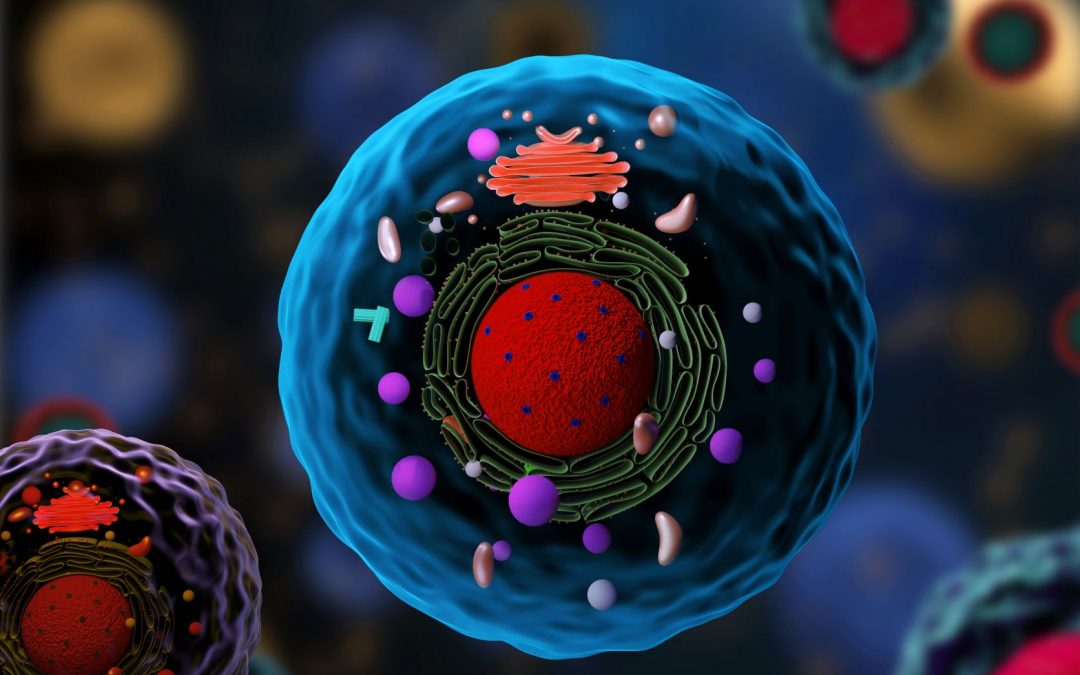Studying calcium flux leads to insights into normal physiology and disease
Calcium ions (Ca2+) are involved in numerous intracellular signaling cascades and in a broad range of physiological processes. These include neurotransmission, muscle contraction, and hormone secretion, as well as cell motility, division, and apoptosis. Notably, aberrant calcium signaling has been linked to various disease states, with cystic fibrosis, Alzheimer’s disease, and osteoporosis being among many well-documented examples. This article explains how using fluorescent probes for intracellular calcium measurement helps advance researchers’ understanding of calcium signaling and its role in both health and disease. It also comments on some of the different Ca2+ indicators that are available.
Calcium imaging/calcium transient measurements
To function as a messenger, Ca2+ must be compartmentalized in terms of both space and time. To this end, extracellular Ca2+ concentrations are typically maintained at around 1–2 mM, while resting cytoplasmic concentrations are in the region of 100nM; most organelles have μM to mM calcium levels. When signaling is initiated, calcium transients are created through the opening of Ca2+ ion channels or the action of Ca2+ pumps at the plasma membrane, or as a result of Ca2+ efflux from organelles. These can be measured using calcium indicators which, upon binding to Ca2+ ions, either change their excitation or emission spectra or increase the quantum yield of fluorescence.
Ratiometric/non-ratiometric indicators
Calcium indicators are defined as being either ratiometric or non-ratiometric according to how they function. Ratiometric calcium indicators alter their excitation or emission spectra upon binding to Ca2+ ions, with the resultant change being used to determine the calcium concentration. For dual excitation dyes (e.g., Fura-2), the ratio of the fluorescence emission following excitation at two different excitation wavelengths is used. Alternatively, for dual emission dyes (e.g., Indo-1), the ratio of the fluorescence signals at two different emission wavelengths is calculated. The advantages of a ratiometric readout are that it minimizes the effects of photobleaching, uneven loading, and leakage. Additionally, ratiometric indicators address the challenges associated with measuring Ca2+ concentrations in cells of varying thickness within a heterogeneous population. Instead of exhibiting a spectral shift, non-ratiometric calcium indicators change their brightness following Ca2+ binding. Well-known examples include Fluo-3, and the BioTracker near-infrared (NIR) Ca2+ dyes SCT021, SCT022, SCT023 that are frequently used for monitoring Ca2+ in living cells.
How to choose KD and concentration of the indicator
Because calcium indicators are, strictly speaking, divalent metal ion chelators that change their fluorescence properties upon forming a complex with Ca2+ ions, the calcium concentration must be inferred indirectly ‘by means of the law of mass action and its calibration at basal (Fmin) and saturating (Fmax) Ca2+ concentrations’ (see Oheim, 2015). However, inference is complicated by the fact that Fmin, Fmax, and the affinity of the calcium indicator for Ca2+ (KD) are not usually precisely known, as well as by the need to supply the calcium indicator to the cells in a buffer (leading to dilution of Ca2+). What this means in practice is that low affinity, low concentration indicators are poorly representative of Ca2+ transients (due to most Ca2+ already being bound to endogenous proteins), while high affinity, high concentration indicators provide a more accurate measurement of flux but have the potential to interfere with the underlying biology. To address this issue, it is recommended that an indicator with matched sensitivity (KD) to the Ca2+ concentration in the cellular compartment of interest be chosen. It is also advised that, for cytosolic Ca2+ measurements, the indicator be introduced directly into the cytosol at the intended final concentration via whole-cell patch loading.
Probing subcellular compartments
Targeting calcium indicators to subcellular compartments can be challenging. For example, many acetoxymethyl (AM) ester derivatives (e.g., X-Rhod-1) enter subcellular organelles in varying amounts depending on the relative esterase concentrations. Recently, the use of genetically encoded Ca2+ indicators (GECIs) to target specific subcellular compartments has become popular. GECIs are chimeric biomolecules comprising a fluorescent protein (e.g., GFP) and a Ca2+ binding protein, and can be directed to compartments of interest using ER retention signals, mitochondrial targeting sequences, or membrane anchors, as applicable. Although the GECI methodology is still in its early stages, it promises many advantages, not least the capacity for performing long-term studies in transgenic animals to monitor growth and development.
Calcium microdomains
Calcium microdomains are small, highly concentrated regions of Ca2+ ions, usually found at sites where Ca2+ enters the cytoplasm. They regulate specific processes in defined regions of the cell by providing a highly localized pulse of Ca2+. Key functions of calcium microdomains include controlling pre- and post-synaptic events in neurons, regulating cardiac cell contraction, and activating various transcription factors to enhance gene expression. Detecting calcium signals in such small compartments can be difficult, with background noise often reducing the assay window. Although background can be reduced using low-affinity Ca2+ indicators, membrane-tethered GECIs are often a preferred approach to calcium microdomain analysis. Recently, nanobiosensors have seen increased uptake for interrogating calcium microdomains; these consist of a cell-penetrating peptide, an antibody for subcellular targeting, and multiple Ca2+ indicator molecules, and provide pointillistic detection of Ca2+ in their immediate vicinity.
Selecting fluorescent probes for intracellular calcium measurement
Understanding fluorophore properties is critical when it comes to identifying probes for intracellular calcium measurement. Use FluoroFinder’s Spectra Viewer to quickly compare over 1,000 fluorophores from all suppliers in one intuitive platform, or leverage our Panel Builder to optimize your multiplexed experiment with the very latest fluorophore and antibody offerings across >60 suppliers. Whether you’re studying calcium flux at the plasma membrane, probing subcellular compartments, or studying calcium microdomains, you can count on us to simplify your experimental design.
Sign up for our eNewsletter to receive regular updates on a broad range of fluorescence-based research techniques.
More resources:
https://www.nordicbiosite.com/news/whats-a-ratiometric-indicator
https://www.frontiersin.org/articles/10.3389/fmed.2019.00128/full





